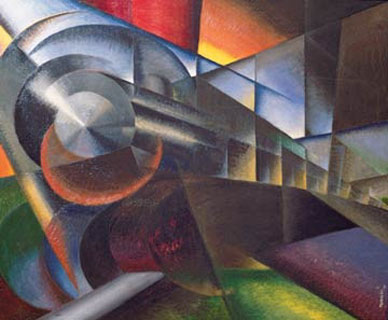H.G. Wells wrote that “the nineteenth century, when it takes its place with the other centuries in the chronological chart of the future, will, if it needs a symbol, almost inevitably have as that symbol a steam engine running upon a railway.” The Walker Art Gallery’s new exhibition, “Art in the Age of Steam”, takes Wells’s thesis as its starting point while travelling a good few years past his chronological terminus of 1900. Its subject is the way in which painters and photographers responded to the railway, both as fact and emblem, from the middle years of the nineteenth century to the early decades of the twentieth.
Logically the show should have begun with J.M.W. Turner’s great paean to the power and thrill of steam-powered locomotion, Rain, Steam and Speed, of 1844. With its abbreviated forms and rushing, headlong perspective, Turner’s vision of a dark, thrusting, tubular train piercing the misty air is the quintessential ninteenth-century picture of train travel – matched, in the work of the painter’s contemporaries, only by by the word-painting in Dickens’s Dombey and Son: “Away with a shriek, and a roar, and a rattle ... roaring, rattling, tearing on, spurning everything with its dark breath ... shrieking, rolling, ratttling through the purple distance!” Sadly, despite the smoothness of modern rolling stock, Turner’s evanescent masterpiece has been deemed too fragile to travel from the National Gallery to Liverpool. It has been replaced by a digital projection, like a stained glass replica of a hallowed relic. Its absence is pretty much the only disappointment in what is otherwise a fascinatingly broad-ranging exhibition, especially strong in loans from collections in France and America.
“Type of the modern! Emblem of motion and power! Pulse of the continent!” The American poet Walt Whitman’s enthusiasm for the...


